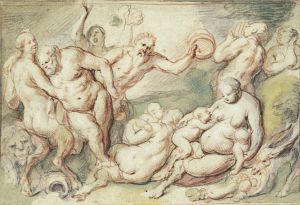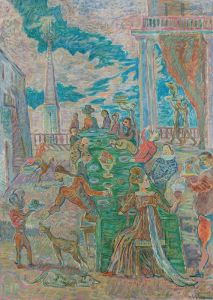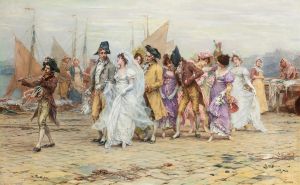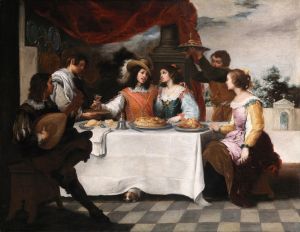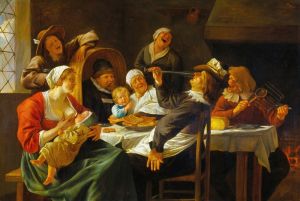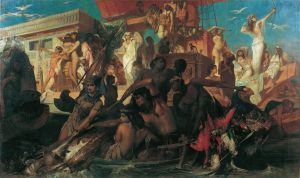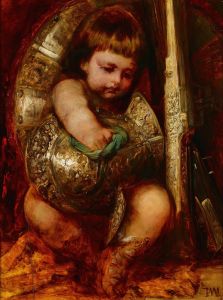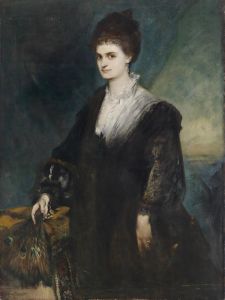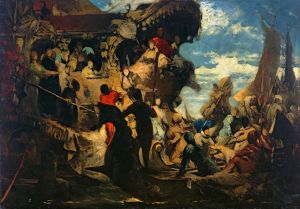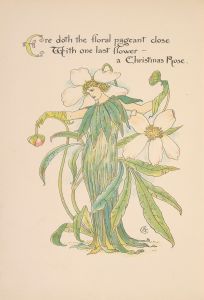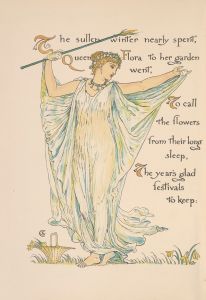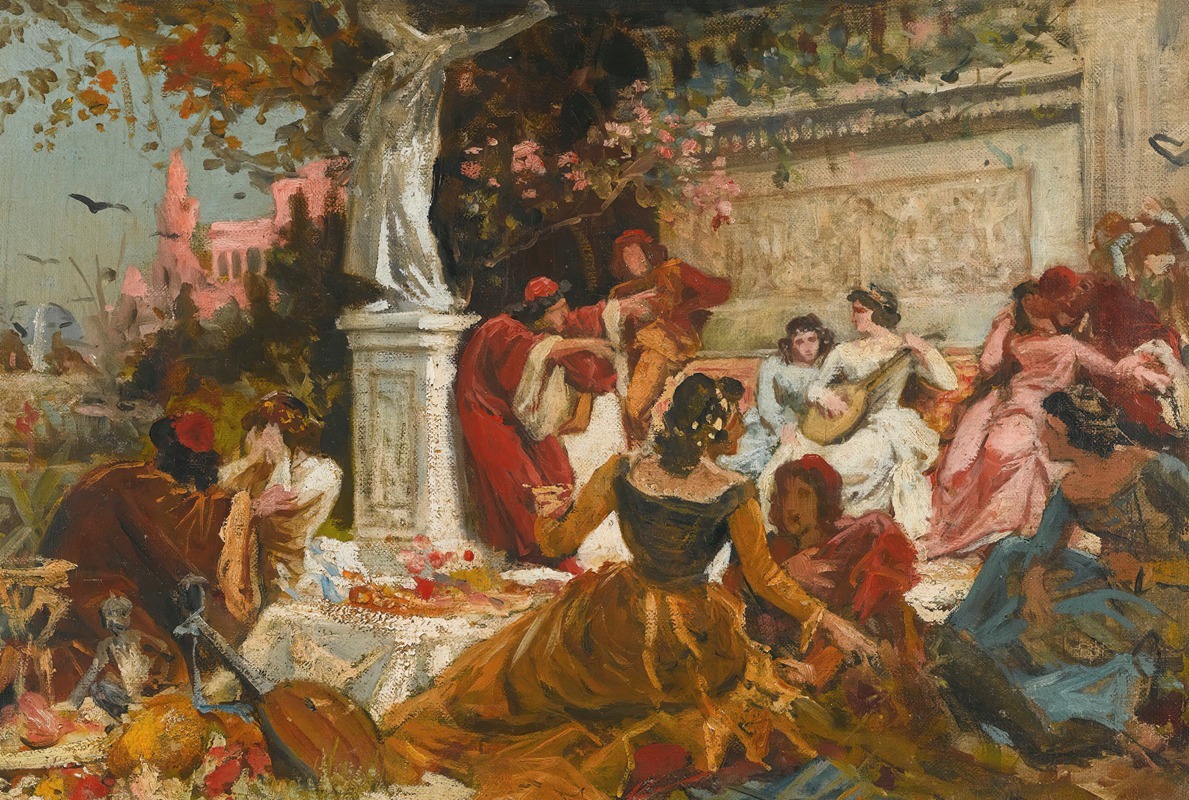
Banquet In A Park
A hand-painted replica of Hans Makart’s masterpiece Banquet In A Park, meticulously crafted by professional artists to capture the true essence of the original. Each piece is created with museum-quality canvas and rare mineral pigments, carefully painted by experienced artists with delicate brushstrokes and rich, layered colors to perfectly recreate the texture of the original artwork. Unlike machine-printed reproductions, this hand-painted version brings the painting to life, infused with the artist’s emotions and skill in every stroke. Whether for personal collection or home decoration, it instantly elevates the artistic atmosphere of any space.
Hans Makart's painting Banquet in a Park is a work by the 19th-century Austrian artist, known for his contributions to the academic art movement and his influence on the Viennese cultural scene during the late 19th century. Makart was celebrated for his grandiose and theatrical compositions, often characterized by their vibrant colors, elaborate details, and a focus on historical or allegorical themes.
Unfortunately, there is limited verifiable information available specifically about the painting Banquet in a Park. While Makart's oeuvre includes many large-scale works that depict opulent gatherings, allegorical scenes, and lush landscapes, detailed records or scholarly analyses of this particular painting are not widely documented. As such, it is difficult to provide a comprehensive description or contextual analysis of this artwork without resorting to speculation.
Makart's broader body of work, however, reflects his fascination with the interplay of nature, luxury, and human activity. His paintings often feature richly dressed figures in dynamic compositions, set against dramatic backdrops that emphasize sensuality and excess. These elements were emblematic of the "Makartstil" (Makart style), which became highly influential in Vienna during his lifetime.
If more information about Banquet in a Park becomes available through reliable sources, it would be possible to provide a more detailed account of its significance and place within Makart's artistic legacy. For now, the painting remains an example of Makart's general style and thematic interests, but specific details about its creation, context, or reception are not readily accessible.





